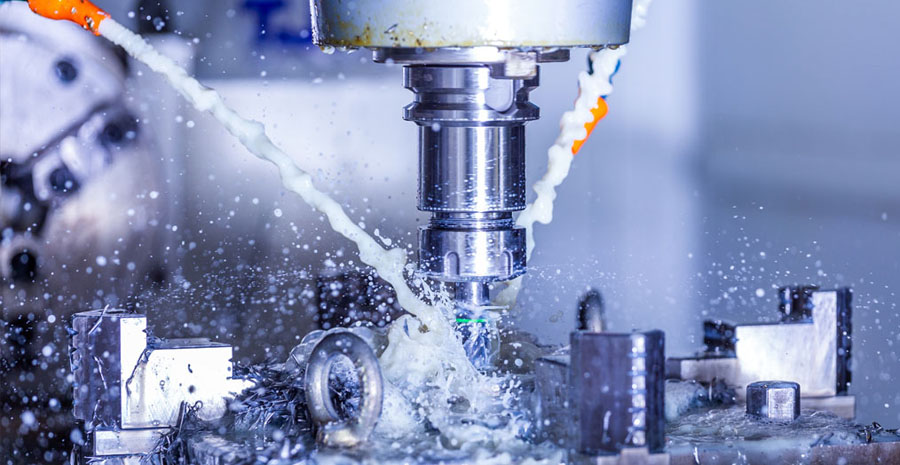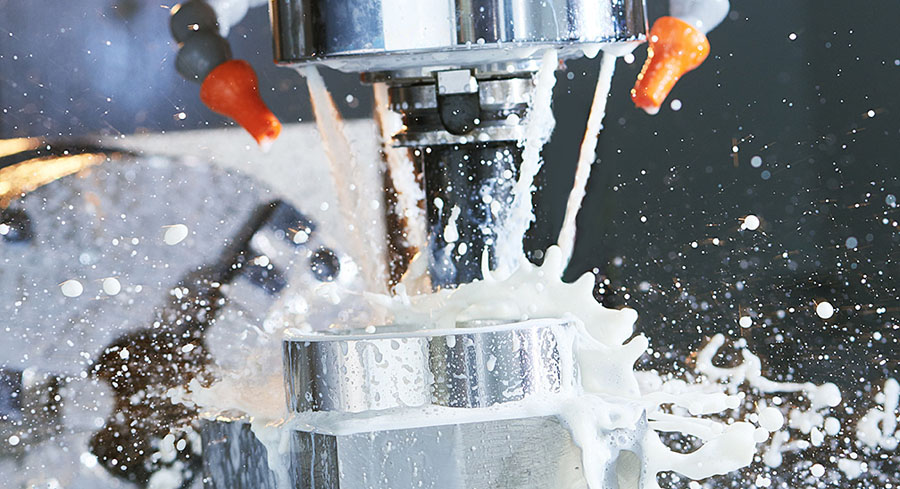In machining operations, heat energy plays a very important role. Due to the presence of thermal energy, various adverse effects will be produced on the tool and the workpiece. When the cutting temperature is slightly higher, it is very unfavorable for the cutting tools and workpieces to be processed. It needs to be controlled by reducing it as much as possible without losing product quality and productivity.
Coolant is an important part of machining, including grinding, milling and turning. They help extend tool life and improve the surface finish of the machined parts. Understanding the role and type of coolant will help you choose the coolant that suits your machine and operation. By properly maintaining the concentration level of the coolant, not only can the service life of the coolant be prolonged, but also the service life of tools and machines.
What Is Coolant?
Coolant, also known as cutting fluid, cutting oil, cutting agent or lubricant, is an industrial fluid used in metal cutting processes, such as CNC machining, to cool and lubricate cutting tools and workpieces. The cutting fluid is composed of a variety of super functional additives through scientific compound coordination, usually made of petroleum distillate, animal fat, vegetable oil, water and air or other raw materials.
Without the shortcomings of traditional soap-based emulsions, such as odor in summer, difficult to dilute in winter, poor anti-rust effect, cutting fluid has better cooling performance than saponified oil, suitable for cutting and grinding of ferrous metals, non-toxic, tasteless, and harmful to the human body No corrosion, no corrosion to equipment, no pollution to the environment, no adverse effects on lathe paint.

Coolant Usage
Cooling
During the machining process, a large amount of heat is released due to the friction between the tool and the workpiece, thus wasting energy. Air can also be used as a coolant, but for very light cutting and low duty cycle. However, in the production process, heavy cutting operations are carried out for a long time. Therefore, in order to produce in a continuous manner, liquid coolant must be used to cool the tools to dissipate heat faster and help speed cutting and reduce friction and tool wear.
Lubrication
At the interface between the cooling tool and the cutting edge, the cutting fluid has also been used as a coolant instead of cooling. Lubrication helps to avoid welding chips to the tool due to the heat generated during machining. In addition, the coolant can help evacuate the chips from the parts, prevent the chips from re-cutting and help the surface treatment of the parts.
Types And Methods Of Coolant Delivery
CNC coolant is available in several different forms-both characteristic and pressure. The most common forms include air, mist, large amounts of coolant, high pressure and minimum amount of lubricant (MQL). Choosing the wrong pressure can cause damage to parts or tools, while choosing the wrong pressure can lead to the exhaustion of workshop resources.
Air:
Cooling and removing chips, but no lubrication purpose. The cooling efficiency of air coolant is not as good as that of water or oil-based coolant. For more sensitive materials, air coolant is usually preferred compared to the type that directly contacts the part. For many plastics, this is correct. If direct coolant is used, thermal shock or rapid expansion and contraction of parts may occur.
Mist:
For situations where chip removal and heat dissipation are not required, this low-pressure coolant is sufficient. Since the pressure exerted in the mist is not high, the parts and tools will not be subjected to additional stress.
Flood: This low-pressure method can lubricate and flush the chips on the parts to avoid re-cutting of the chips, which is a common situation that damages the tool.
High Pressure:
Similar to filling with coolant, but the delivery pressure is greater than 1,000 psi. This is an excellent choice for removing and draining chips because it will blow the chips away from the part. Although this method will cool the part immediately and effectively, the pressure may be high enough to damage a micro-diameter tool. This method is usually used in deep cavity or drilling operations, and can be transported by the tool through the coolant or the coolant tank built into the tool itself.
Minimum Quantity Lubricant (MQL):
Every mechanical workshop focuses on how to gain a competitive advantage-reduce costs, increase production and improve workshop efficiency. This is why many shops choose MQL and its obvious environmental benefits. Using only the necessary amount of coolant will greatly reduce costs and wasted materials. This lubricant is used in the form of an aerosol or a very fine mist to provide enough coolant to effectively perform a given operation.
In summary, CNC coolant is often overlooked as the main component of machining operations. The type of coolant or lubricant and the pressure it exerts are critical to successful machining and optimal shop efficiency. The coolant can be applied in the form of compressed air, mist, overflow or high pressure. Some machines also have MQL capabilities, which means they can effectively limit the amount of coolant used to the amount necessary to avoid waste.

Coolant Type
Coolants are divided into four main categories and have many different formulations. The choice of coolant should be based on the overall performance it provides, which is centered on your processing application and the materials used.
Soluble Oil:
The most common among all water-soluble cutting fluids, it is an excellent choice for general-purpose machining. Water-soluble oils usually form emulsions after mixing with water. The resulting concentrate contains the emulsion and base mineral oil to obtain a suitable emulsion. When it exists in a diluted form, it has good performance, and in addition to heat transfer performance, it also has good lubricity. Soluble oil is very cheap and is usually used as a fluid in the industry. Adding a certain amount of rust inhibitor can also lubricate and resist rust. The disadvantage is that if the coolant tank is not properly maintained, they can easily cause microbial growth of fungi and bacteria.
Synthetic Oil:
These types of oils tend to be the cleanest of all cutting fluids, and they have no mineral oil or petroleum. Instead, they are formulated with basic organic and inorganic compounds and additives to prevent corrosion. It provides the best results in a diluted form. Synthetic fluid has the best cooling performance than other cutting fluids.
Semi-synthetic Oil:
When soluble oil and synthetic fluid are mixed, a semi-synthetic fluid can be obtained. Considered to be the best of both worlds, they have less oil than emulsion base oils, have less odor, and retain many of the same lubricating properties. This allows them to be used in a wider range of processing. In addition, the heat transfer performance and cost of semi-synthetic fluids are between those of soluble and synthetic fluids.
Straight Oil:
Straight oils refer to those oils that cannot be used in machining operations in undiluted form and are not miscible with water. Usually, its composition is base mineral oil or petroleum. It also contains polar lubricants such as vegetable oils, fats and compound oils. They may also contain additives such as sulfur, chlorine and phosphorus. They provide the best lubrication but the worst cooling performance.
Carbon Dioxide Coolant
Carbon dioxide is used as a coolant and can be cooled by pressurized liquid. CO2 is an expanding alloy that helps to lower the temperature, enough to transform the phase into a solid. Then, with the help of an external nozzle or conveying through the spindle, these crystals are spread to the cutting area to cool the cutting tool and the workpiece with temperature control.
Aerosol
Aerosol can be defined as a cutting fluid in which air with tiny droplets is dispersed throughout the cutting fluid. The delivery of the aerosol is done directly through the groove of the tool. In terms of location and time, the delivery of the aerosol has been completed, which is almost like dry processing from the operator’s point of view. The chips produced are very close to the dry machine chips and do not need to be drained.
Tips for choosing the right coolant
The best coolant will protect the machine and extend the life of the tool, while providing an environment acceptable to operators and environmental health and safety departments.
Choosing the best coolant to optimize all these parameters is best combined with the opinions of the machine tool manufacturer and coolant supplier.
Shop operators and engineers usually rely on the expertise of coolant suppliers to discuss and recommend the best coolant for the processed material. Most shops want to reduce the number of different coolants used as much as possible to reduce the maintenance and disposal costs of the coolant, and allow them to buy coolants in large quantities to save more costs.


